Proficy HMI/SCADA CIMPLICITY 7.5 provides a family of products that offer a wide variety of OPC functionality.
|
CIMPLICITY OPC Servers |
|
|
CIMPLICITY OPC Clients |
|
|
OPC general information |
CIMPLICITY OPC Servers
CIMPLICITY offers the following OPC servers.
|
CIMPLICITY OPC Server |
The CIMPLICITY OPC Server allows OPC clients to read, write, and subscribe to changes in CIMPLICITY runtime database points.
Note: The CIMPLICITY OPC Server also provides its own window for viewing point details.
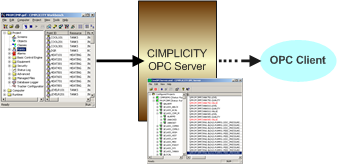
|
CIMPLICITY's Gageport Mitutoyo OPC Server |
CIMPLICITY's Gageport Mitutoyo OPC Server allows OPC clients to read and subscribe to changes from GagePort Mitutoyo, FlexPort and MIG2 gauge hub devices that are tied to local serial ports. It also supports many simple serial devices (e.g. bar code readers) that are tied directly to local serial ports.
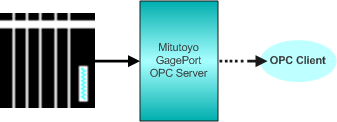
|
CIMPLICITY OPC Alarm and Event Server |
The CIMPLICITY OPC Alarm and Event Server sends requested data from Alarm Managers in all connected source projects to OPC A&E clients.
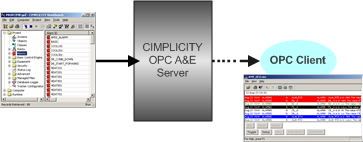
CIMPLICITY OPC Clients
CIMPLICITY offers the following OPC clients.
|
OPC client |
The CIMPLICITY OPC Client provides CIMPLICITY users with access to process data from OPC servers.
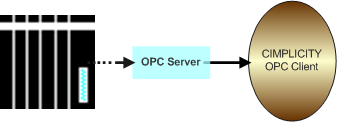
|
Advanced Viewer |
Displays point values collects from an OPC Server through CimView screens and the Point Control Panel without requiring a running CIMPLICITY project.
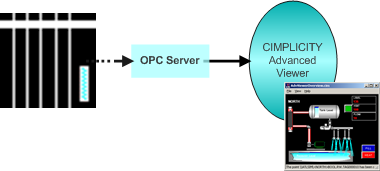
|
OPC A&E client |
Displays alarm and event data that was received from an OPC server in the Alarm Viewer
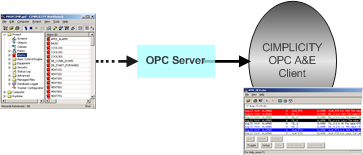
OPC General Information
An OPC server provides a standards-based interface to some form of runtime data. The data may come from a specific physical device (e.g. a PLC) or from a Distributed Control System.
CIMPLICITY OPC servers:
![]() Conform to Data Access 3.0
specification.
Conform to Data Access 3.0
specification.
![]() Are backward compatible with Data
Access 2.0 specifications.
Are backward compatible with Data
Access 2.0 specifications.
![]() Do not support Data Access 1 specification;
version 1 is obsolete.
Do not support Data Access 1 specification;
version 1 is obsolete.
OPC is a technology standard initially developed by a group of automation industry companies and now managed by the OPC Foundation, a not-for-profit organization. The standard was developed to provide a common de-coupling mechanism for automation system software components.
In depth information about OPC compliance is available at the OPC Foundation Web site http://www.opcfoundation.org .
![]() The OPC Foundation states that
"Data Access 3 specification leverages earlier versions while
improving the browsing capabilities and incorporating XML-DA
Schema."
The OPC Foundation states that
"Data Access 3 specification leverages earlier versions while
improving the browsing capabilities and incorporating XML-DA
Schema."
![]() As of the CIMPLICITY 7.0 release
the OPC book OPC - Fundamentals,
Implementation and Application, Revision 3, New Revised and
Extended Edition 2006, Soft Cover with CD ROM is available
at the OPC Foundation Web site.
As of the CIMPLICITY 7.0 release
the OPC book OPC - Fundamentals,
Implementation and Application, Revision 3, New Revised and
Extended Edition 2006, Soft Cover with CD ROM is available
at the OPC Foundation Web site.
OPC leverages Microsoft's COM/DCOM technology. The OPC specification defines the COM interfaces and object behaviors common to automation software applications. Since the OPC standard is COM compliant, DCOM can be leveraged for distributed deployments. For example, an OPC client application can run on a computer node different from that of an OPC server. Neither application (the client or the server) is aware of this distributed architecture.
|
OPC Client/Server architecture. |